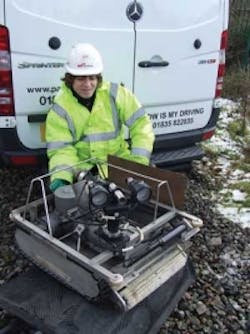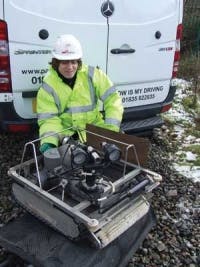UV System Helps Water Treatment Plant Reduce Carbon Footprint
The installation of a state-of-the-art UV oxidation system at Aqua Pennsylvania's Neshaminy Water Treatment Plant in Southeastern Pennsylvania has improved the plant's water quality, decreased its operating costs and positioned the plant to reduce its carbon footprint by an estimated 21.5 million kilograms over the next 20 years.
During the spring and summer, the Neshaminy water treatment plant, which serves approximately 100,000 people, was routinely treating for methylisoborneol (MIB) and geosmin, compounds resulting from naturally occurring algae blooms in the plant's source water-the Neshaminy Creek.
While not known to cause any health risks, MIB and geosmin can greatly affect the water's taste and odor. Prior to the installation of the UV oxidation system, Aqua used powdered activated carbon (PAC) to remove the compounds, which contributed significantly to production of residual waste.
"While helpful, the PAC was unable to adequately eliminate the taste and odor issues from the algae blooms, and at times, customers still found an earthy or musty taste evident in the finished water," said Marc Lucca, vice president of production at Aqua. "During more significant geosmin and MIB events, we would increase our PAC dose, which increased our operational costs, sludge handling requirements and carbon footprint. Our commitment to water quality and sustainability led us to explore alternative methods to address the taste and odor issues as well as a way to reduce our residual waste, which would have a positive impact on operating costs."
After careful consideration, Aqua chose to install a TrojanUVSwift™ ECT UV-oxidation system, becoming one of a relatively small number of treatment facilities in North America combining ultraviolet light and hydrogen peroxide for the removal of taste and odor in potable water treatment plants. Instead of using PAC, the new UV-oxidation system adds hydrogen peroxide upstream of the UV reactor where it breaks down contaminants and the hydrogen peroxide into hydroxyl radicals through UV-photolysis. The hydroxyl radical is a powerful oxidant that reduces taste and odor-causing contaminants like MIB and geosmin.
The UV-oxidation method more effectively treats taste and odor compounds, while decreasing the plant's carbon dioxide output. Historical data show that a PAC dosage of 30 mg/L could achieve a maximum 55 percent reduction in geosmin while UV-oxidation can achieve a minimum 90 percent reduction.
In addition to providing a higher level of geosmin removal, the Neshaminy plant is anticipated to reduce its carbon footprint from 29 million kilograms over 20 years to 7.5 million kilograms, a reduction of 74 percent, and it will cut its residual waste in half compared to PAC. This equates to 23,670 less tons of carbon dioxide being released into the atmosphere, equivalent to the fossil fuel emissions released by driving nearly 5,000 cars for one year.
"The relatively high carbon footprint associated with powdered activated carbon is partly a result of the large amount of energy required, in the form of heat and steam, to convert coal into activated carbon," said Terry Keep of TrojanUV. "The UV-oxidation system is a much simpler process whose primary carbon dioxide usage comes only from the generation of electricity to operate the UV lamps."
The TrojanUVSwift™ECT UV-oxidation system's construction at Aqua's Neshaminy treatment plant was completed in August 2010. While algae blooms are more likely to occur during summer months, the plant has already begun to benefit from the cost and waste reduction of the new UV-oxidation system.
More WaterWorld Current Issue Articles
More WaterWorld Archives Issue Articles


